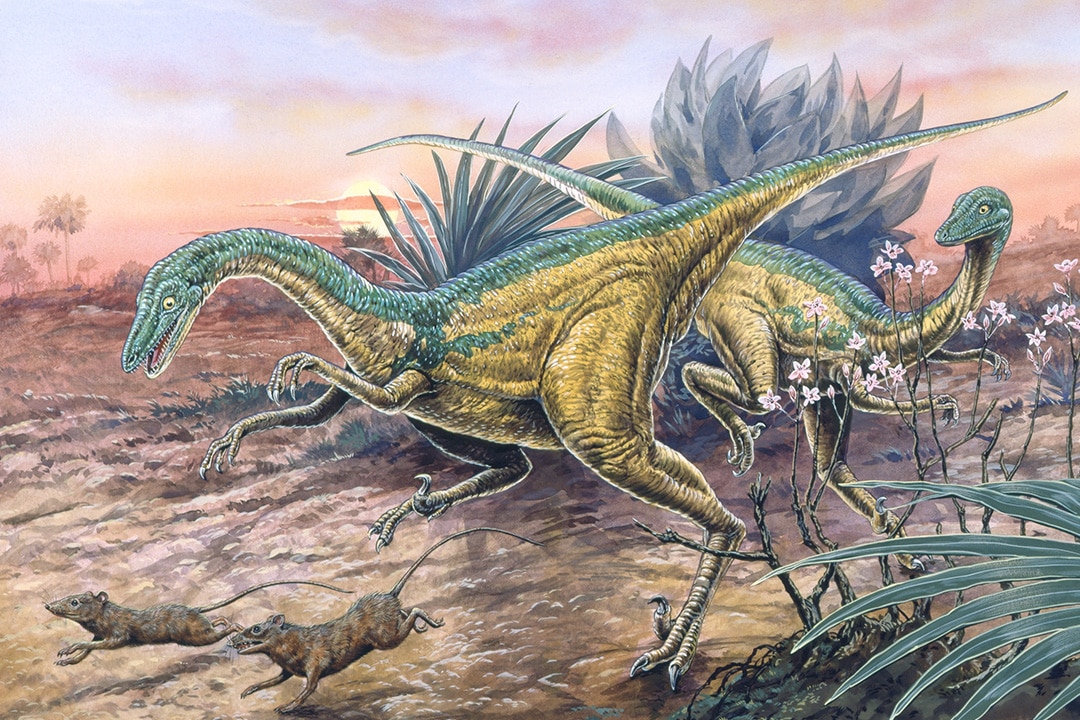Create a free profile to get unlimited access to exclusive videos, sweepstakes, and more!
Mammals were planning to overthrow the dinosaurs well before the Asteroid impact
We are inevitable.

We’ve spent decades dreaming of resurrecting dinosaurs and turning them into tourist attractions, despite the very clear warnings laid out in Jurassic Park and its subsequent sequels. Some combination of fascination and hubris has convinced us we have the power, and maybe even the responsibility, to return dinosaurs to the world they departed 66 million years ago. Before that can be accomplished, we've set our sites on resurrecting some more recently extinct animals. Despite our fantasies, the reality, according to research recently published in the journal Science Advances, is that our ancestors might have driven them to extinction if they’d been given the chance.
To be clear, when we say ancestors, we’re not talking about early humans, or even the bipedal primates which preceded us. We’re talking about our most distant mammalian ancestors, the tiny rodent-like animals who shuffled quietly underfoot during the late Cretaceous.
We often think of dinosaurs as having been cut down in the prime by a classless, sucker punching, planet-shaking asteroid with an axe to grind. Only afterward did the mammals slide in to fill the ecological gaps the dinosaurs left behind. Right? Maybe not.
The new study, carried out by scientists from the University of Oulu in Finland, the University of Vigo in Spain, and an international team of paleontological collaborators, reveals that mammals were already poised to stage a planetary coup before the asteroid showed up and did the job for them. Scientists looked at a vast collection of fossils from right around the border between the end of the Cretaceous, roughly 66 million years ago, and the beginning of the Paleogene. They used Markov networks — a kind of probabilistic model — ecological niche partitioning, and Earth System models to reconstruct the ecosystem of ancient North America.
Roughly 1,600 fossils were included in their analysis, representing animals as diverse as mammals, fish, reptiles, birds, and, of course, dinosaurs. The aforementioned tools allowed researchers to approximate the spatial relationships between different species and the food webs born out of their interactions. In short, rather than envisioning each animal as a monolith within the North American Late-Cretaceous environment, researchers could visualize each species more accurately as a part of a wider interconnected ecosystem. Importantly, they were able to identify these relationships both before and after the extinction event, to discern how those relationships changed as a consequence of the impact.
They found that smaller organisms, which included pretty much all mammals — mammals never really got larger than a housecat until the dinosaurs left the party — as well as aquatic animals, did a little better in the wake of the extinction event than the non-avian dinosaurs. That’s a fact that’s pretty apparent from the simple fact that we are here, and they are not.
The important nuance, however, is a matter of time. Some previous hypotheses about this critical moment in the evolution of life on Earth assumed that mammals were relatively static prior to the impact event and only really exploded in diversity once the dinosaurs were out of the picture. This new study casts doubt on that assumption by demonstrating a level of extreme diversity well before the asteroid hit. The evidence suggests that mammals weren’t waiting for the end times to rebuild in the aftermath, they were preparing to spread into as many environments as possible, asteroid or not.
It just so happens that strategy is also effective for surviving the apocalypse. Researchers found that dinosaurs who didn’t die during or shortly after the impact event remained relatively static in their niches, despite a changed and still-changing world. That biological steadfastness, in the face of a shifting environment, may have ultimately led to their demise. Meanwhile, mammals were primed and ready to spread into the newly available niches. Because mammals had already adapted to survive on a wide range of foods and live in a wide range of environmental conditions, they were better able to withstand the unique pressures of a Manhattan-sized rock smashing into the planet, and the years-long consequences which followed.
It just goes to show that being stoic and immovable might work well under ordinary conditions, but when things get weird, it helps to be able to improvise. And mammals have been the undisputed improv world champions for 66 million years and counting.


























